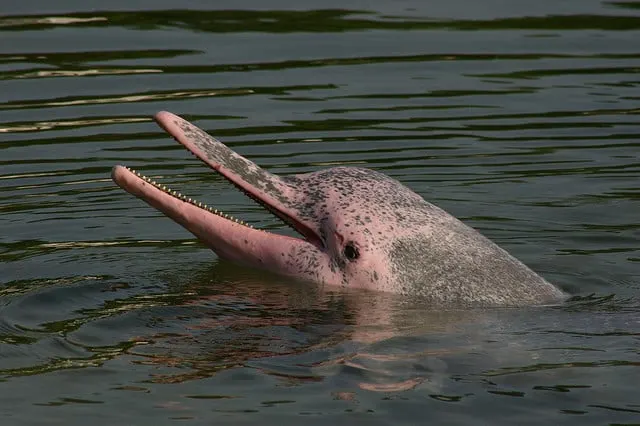The Amazon River dolphin, or Boto or Pink Dolphin, is a distinctive creature in Brazil’s rainforest with a history spanning 50 million years. However, it faces endangerment due to overfishing, pollution and habitat loss, despite its incredible resilience.
In this article, we delve into this curious creature’s unique adaptations and behaviors, shedding light on its vital role in South America’s freshwater ecosystems. Join us as we uncover the captivating world of the Amazon River dolphin.
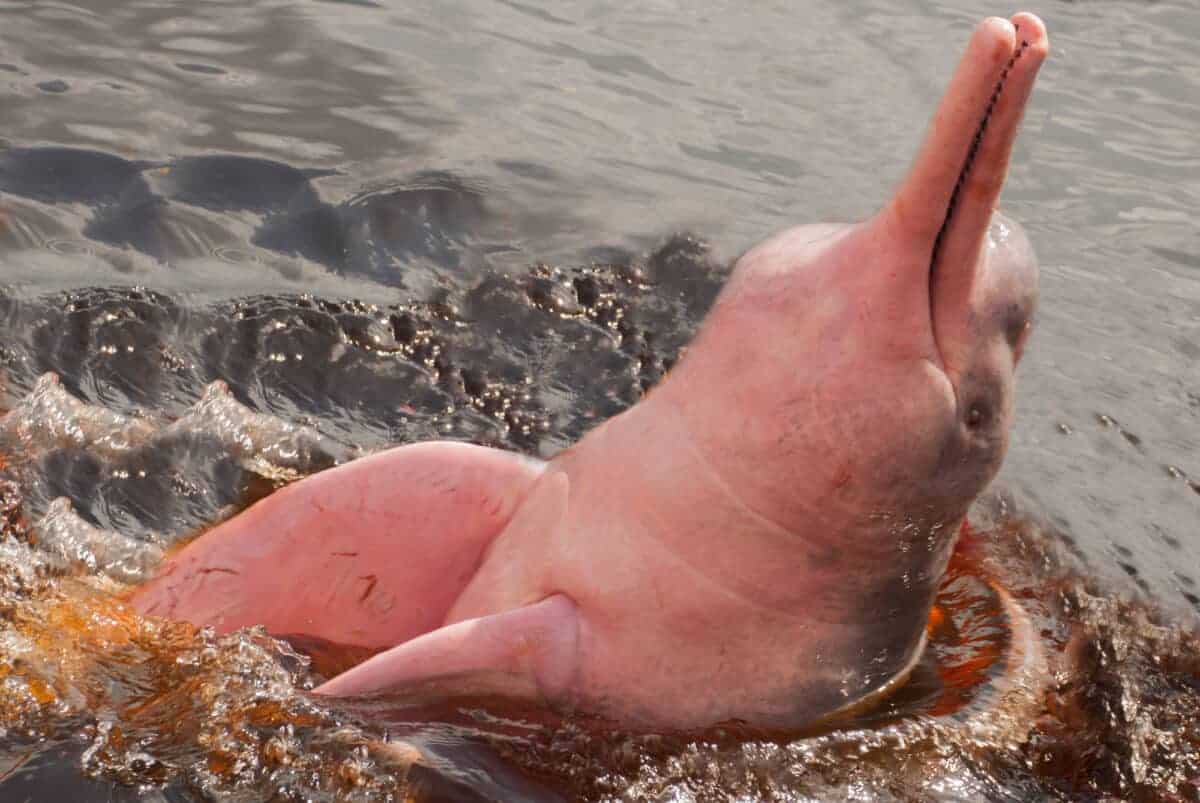
Skip ahead to any section below!
Overview of the Amazon River Dolphin
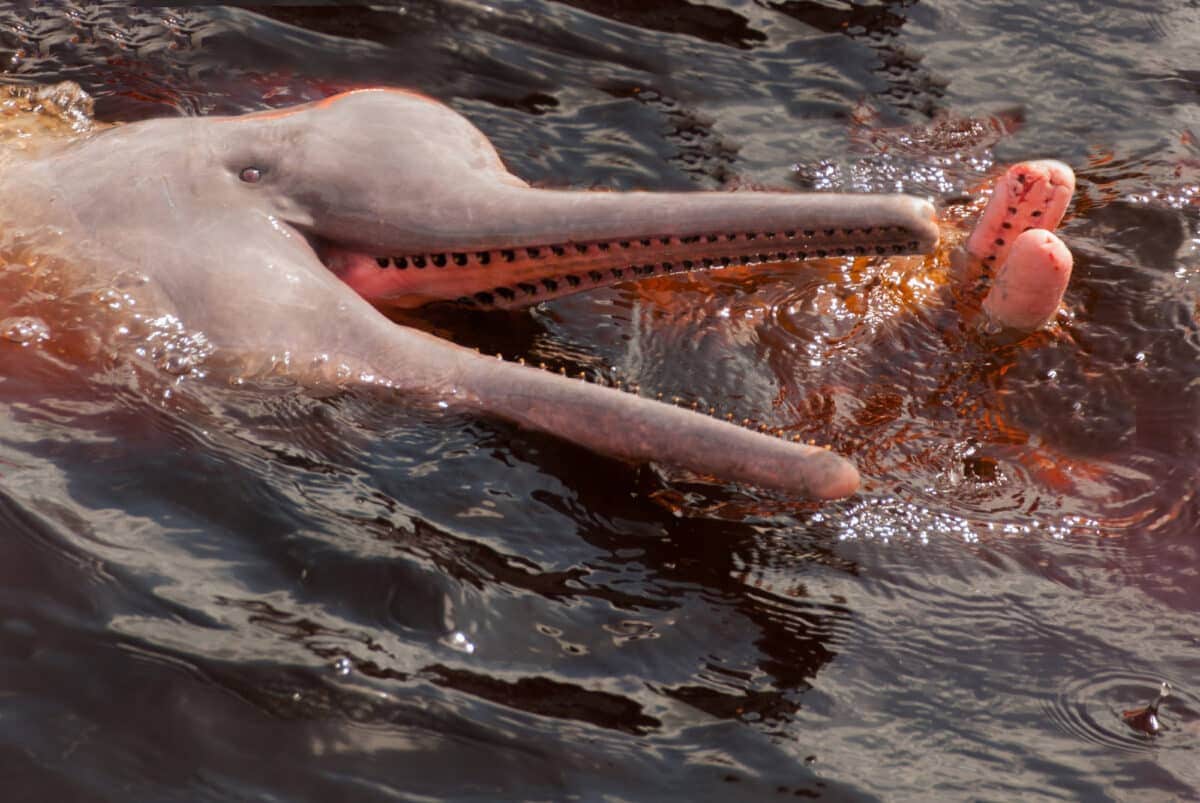
The Amazon River Dolphin, also called the Pink Dolphin, is a distinct species found in the freshwater ecosystems of the Amazon Basin.
Appearance and Size
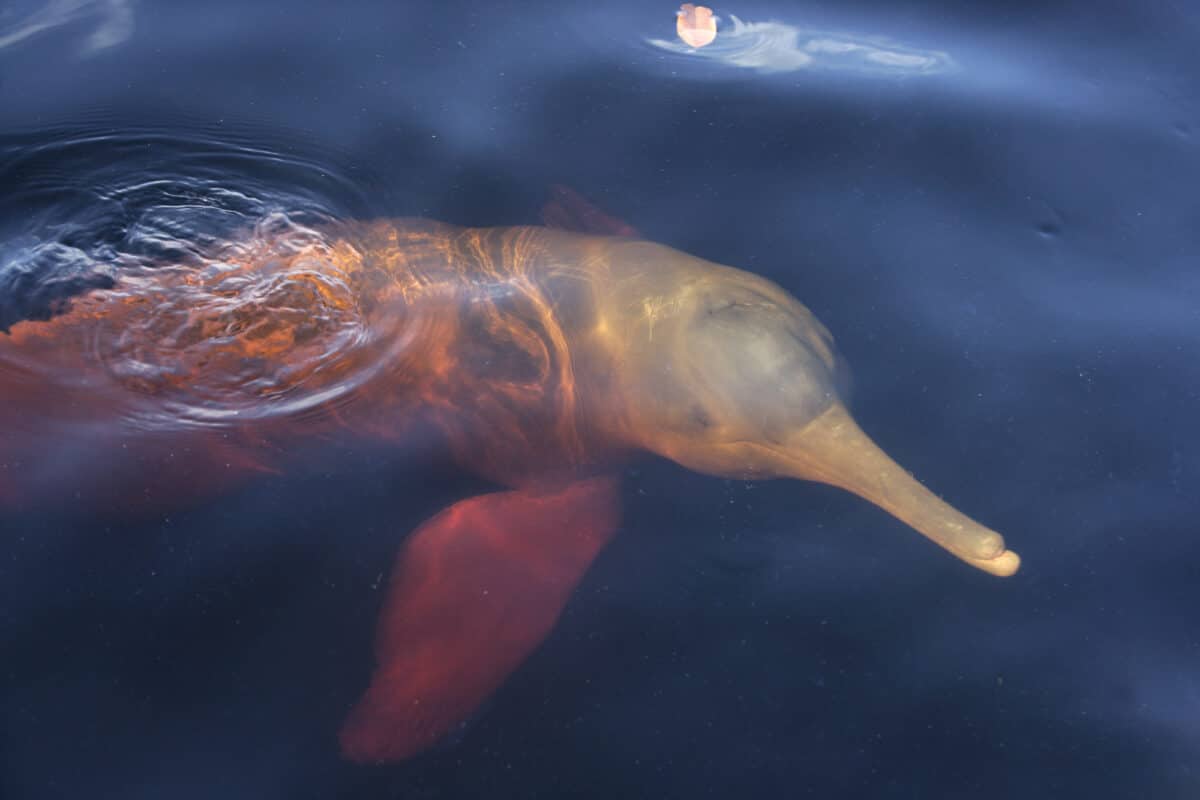
Despite their looks, Amazon River Dolphins are sizable, with adult males growing to lengths of up to 8 feet and achieving weights of around 335 pounds. In contrast, females are a bit smaller, growing up to about 7 feet long and reaching weights of about 185 pounds. Size variations exist among different dolphin species.
Check out: Pigeon Outflies A Peregrine Falcon.
Salient Features
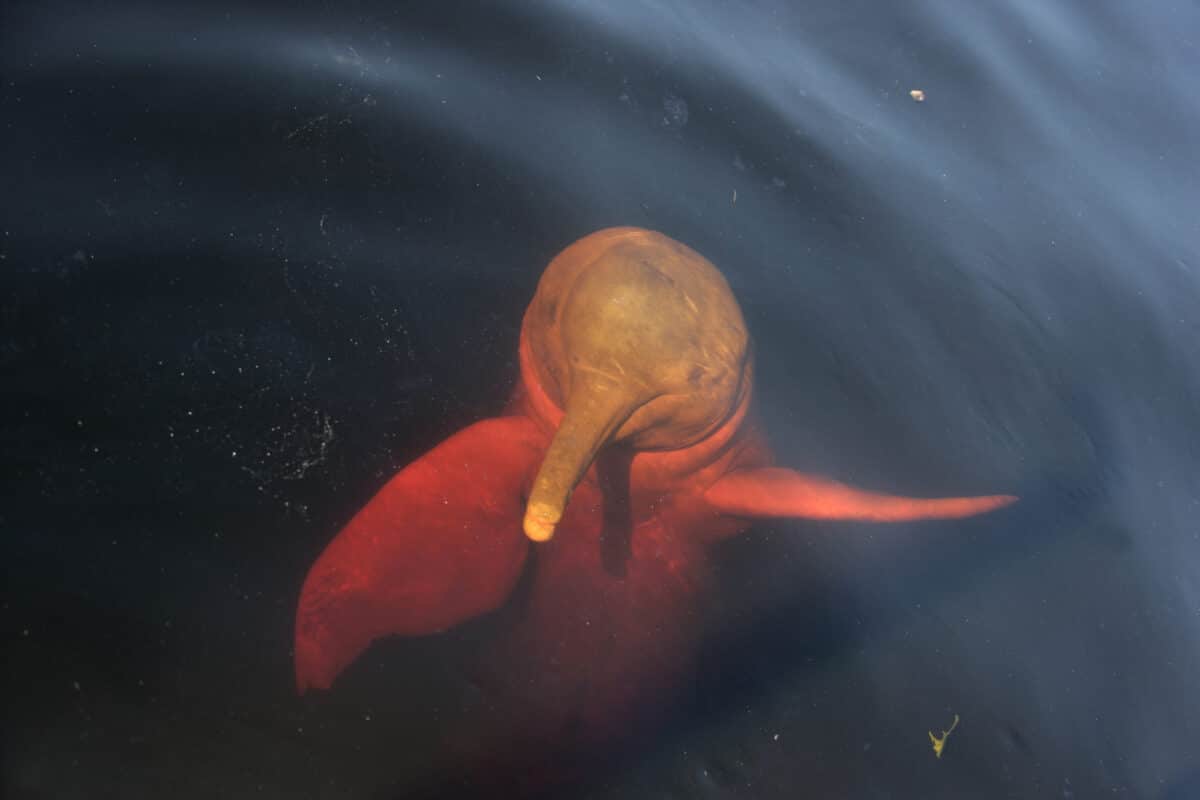
An intriguing trait of these dolphins is their skill in navigating the murky Amazon waters through echolocation. They emit clicks and whistles to locate prey like catfish and piranhas, forming the majority of their diet.
Check out: The Southern Pacific Rattlesnake.
Vulnerable Species
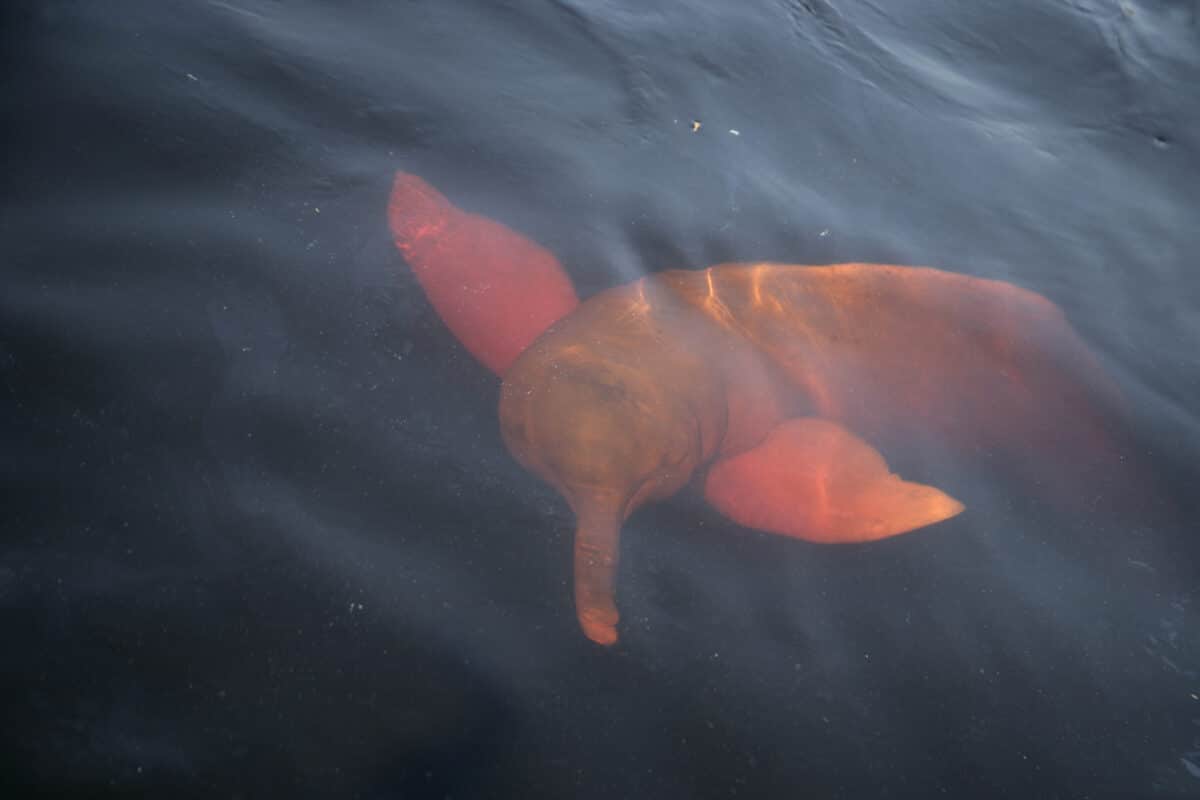
Sadly, the Amazon River Dolphin is currently listed as a vulnerable species due to habitat destruction, pollution, and hunting. It is estimated that there are only around 30,000 left in the wild, with populations continuing to decline.
The International Union for Conservation of Nature (IUCN) lists the Amazon River Dolphin as a vulnerable species. According to estimates, the worldwide population may be as low as 30,000 individuals, with some populations decreasing by as much as 50% over the last few decades.
Conservation efforts are underway to protect the Amazon River Dolphin. These efforts include research to understand the species better, monitoring of populations to track changes, and education programs to raise awareness about the importance of protecting this unique animal. As individuals, we can help by supporting conservation organizations and choosing sustainable practices that reduce our environmental impact.
Check out: California’s Venomous Spiders.
The Life Cycle of the Amazon River Dolphin
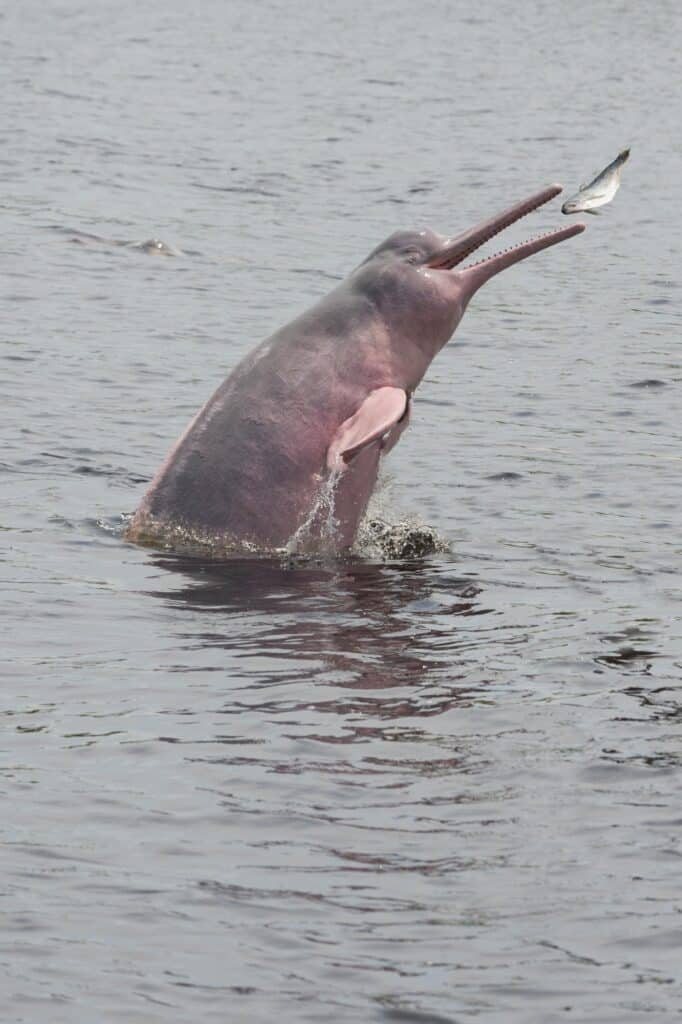
The Amazon River dolphin’s life cycle starts with the birthing season from June to August. Female dolphins give birth to only one calf, nursed for up to two years. During this time, the calf stays close to its mother, acquiring vital survival skills like hunting and social interaction.
After maturing, the calf departs from its mother and joins a group of other juveniles, marking the pre-adult life stage lasting four to six years. In this phase, young dolphins further hone their hunting abilities and establish their social hierarchy within the community.
Once a dolphin reaches full maturity, it will enter the adult stage of its life cycle. Adult Amazon river dolphins are known for their playful nature and unique pink coloration produced by the blood vessels below their skin’s surface. Males typically develop a more robust physique, with a larger dorsal fin and a more muscular body.
Finally, the elderly stage of an Amazon river dolphin’s life cycle begins at age 30 or older. At this point, the dolphin’s health may decline, becoming more vulnerable to predation and disease. However, elderly dolphins still play an essential role in their community, as they can share their extensive knowledge and leadership skills with younger generations.
The Personality Of The Amazon River Dolphin (Pink Dolphin)
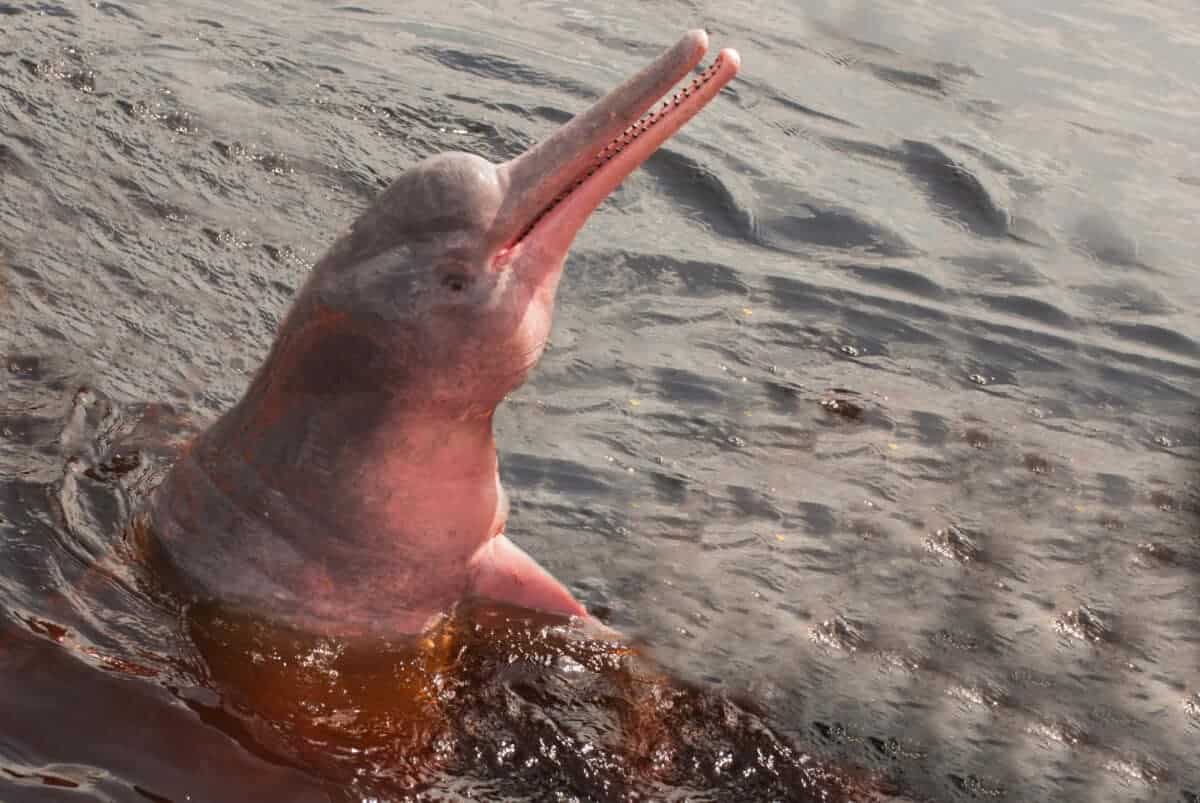
The Amazon River Dolphin, also known as the Pink Dolphin, is a unique and fascinating creature that inhabits the Amazon River and its tributaries in South America.
It is the largest freshwater dolphin in the world, with males reaching up to 9 feet and weighing up to 400 pounds, while females are slightly smaller. These aquatic mammals have a distinctive pinkish color which gradually fades as they age, turning from bright pink to gray.
The Amazon River Dolphin is distinctive with its rounded head, long slender body, and smaller dorsal fin compared to other dolphin species. They can turn their heads in various directions due to a flexible neck and unfused vertebrae, though not as fully as humans do. Notably, they have a small triangular dorsal hump instead of a dorsal fin and paddle-shaped flippers aiding navigation in the Amazon’s murky waters.
How the Amazon River Dolphin is Threatened
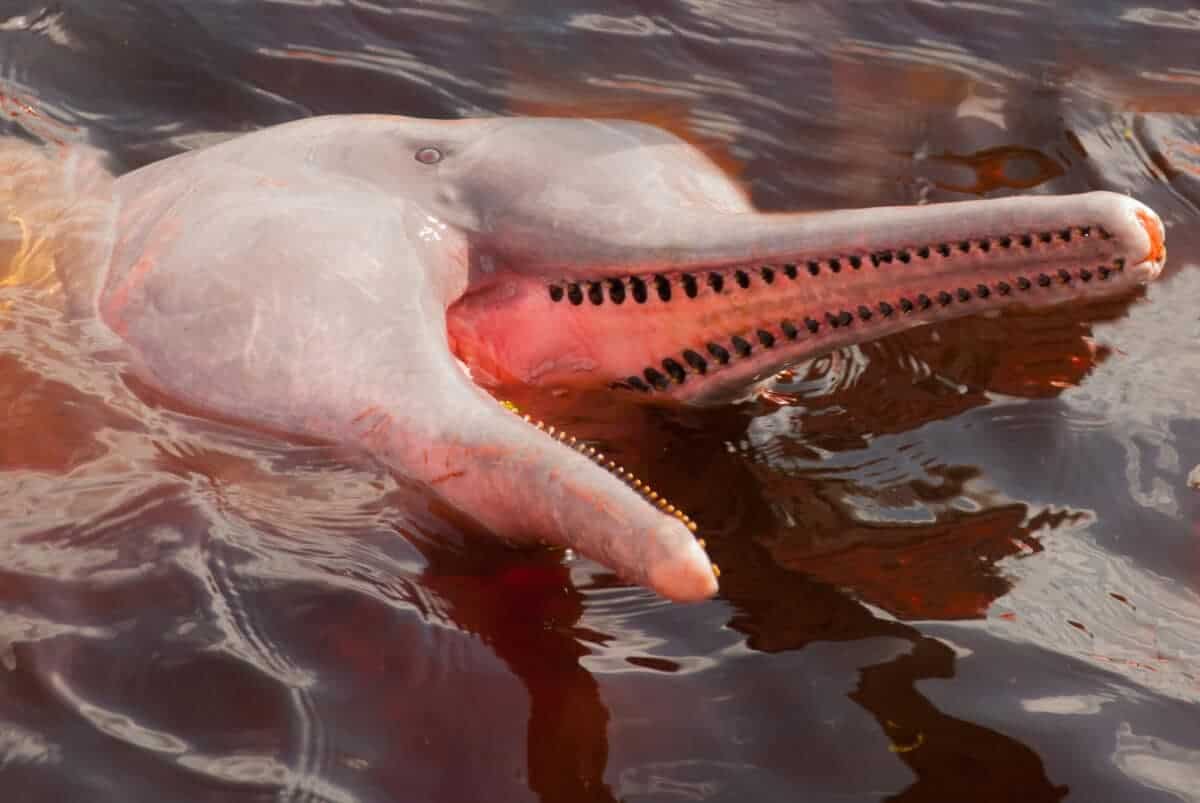
One of the biggest threats comes from human activities such as fishing, pollution, and habitat destruction.
Illegal fishing practices, including gillnets and harpoons, can harm or kill the dolphins directly or indirectly. Plastic and chemical pollution in the water can also injure or kill the dolphins and reduce their food sources.
Habitat destruction is another threat to the Amazon River Dolphin. Deforestation, exploration of oil and gas, and dam construction hurt the dolphins’ habitat. Climate change is another factor that threatens the Amazon River Dolphin’s survival.
Rising temperatures and changing rainfall patterns may affect the dolphins’ food sources and alter the river’s flow, potentially leading to further habitat loss.
Conservation Efforts for the Amazon River Dolphin
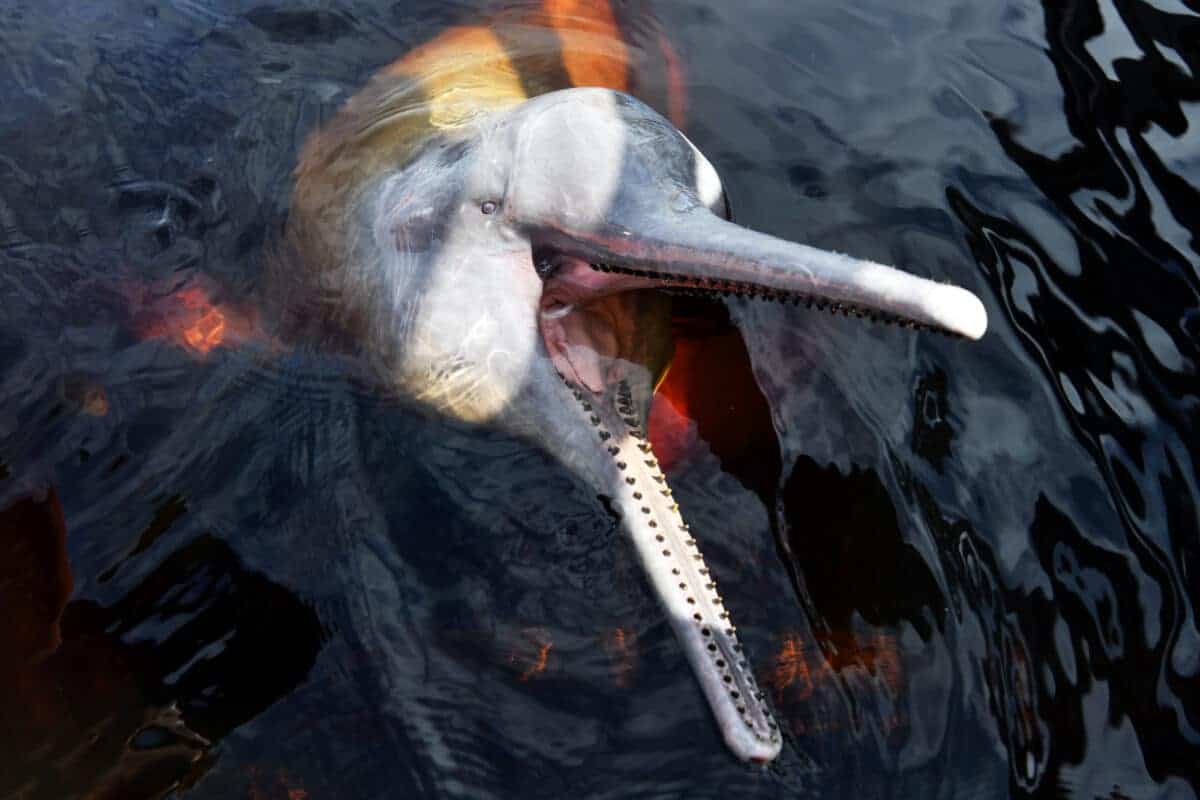
According to the International Union for Conservation of Nature (IUCN), the Amazon River dolphin is listed as a species of “Least Concern.” However, their population is slowly decreasing due to various factors such as dam construction, water pollution, and illegal hunting for their meat and body parts.
To combat the threat of extinction, several conservation efforts are underway. In Brazil, the Mamirauá Sustainable Development Reserve is a protected area for the Amazon River dolphin. The reserve also conducts research and implements education programs to promote the importance of preserving the species.
Another conservation effort includes the monitoring and tracking of Amazon River dolphins through photo-identification and GPS tagging. This allows researchers to study their habitat and behavior and take targeted conservation actions and policy decisions.
Facts About the Pink Dolphin of the Amazon River
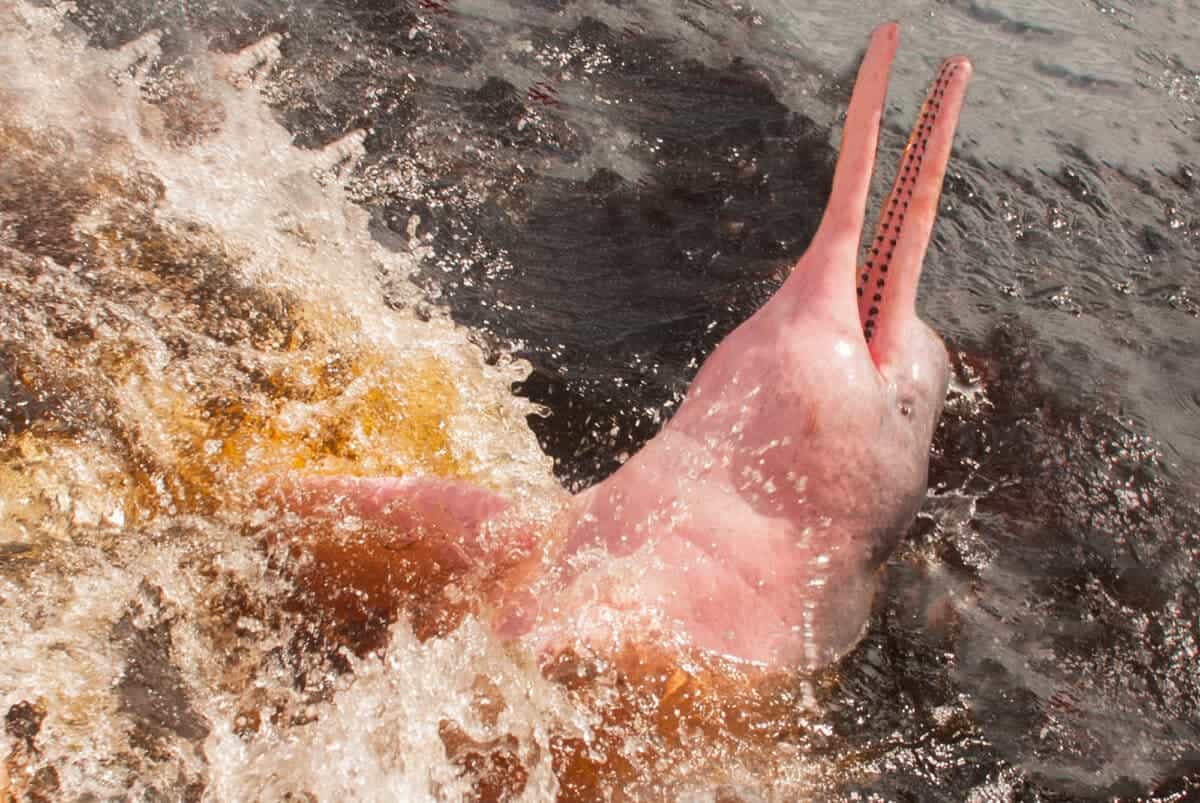
The Pink Dolphin of the Amazon River, also known as the Boto, is a fascinating creature inhabiting South America’s freshwater rivers.
One of the unique features of this aquatic mammal is its distinct pink coloration, caused by blood vessels near the skin’s surface. Despite their size, these creatures are incredibly graceful, capable of swimming up to 15 miles per hour.
Key Points
| One of the special features of this aquatic mammal is its distinct pink coloration, caused by blood vessels near the skin’s surface. |
| One of the special features of this aquatic mammal is its distinct pink colouration, caused by blood vessels near the skin’s surface. |
| According to the International Union for Conservation of Nature (IUCN), the Amazon River dolphin is listed as a species of “Least Concern.” |
| Sadly, the Amazon River Dolphin is currently listed as a vulnerable species due to habitat destruction, pollution, and hunting. |
The Final Say
The Amazon River dolphin, or pink dolphin, is a unique species that captivates the hearts and minds of observers. It has existed since long before human civilization and continues to mystify us with its graceful movements in the water. We have learned more about it recently, but still much to be discovered.
Therefore, it should be protected and celebrated as one of Mother Nature’s most majestic creatures. As long as we all work together to preserve its natural habitat, this splendid species can continue to share its beauty with us and future generations, ultimately allowing our planet to remain balanced and sustain life for many years.
If you enjoyed this article as much as me, check out our related article links below!
Next up:
- Discover San Francisco’s Most Dangerous Animals
- Unearth the Reality of Florida’s Venomous Spiders
- Great White Shark Vs. Bull Shark
- Michael Phelps Vs. Dolphin: A Race For Aquatic Supremacy
- Eagle’s Aerial Acrobatics: The Hawk Becomes The Hunted
Join our Forum for free today!

- Huge Pet Bison Breaks Into House - July 22, 2024
- Giant Black Bear Surprises Beachgoers by Emerging from the Ocean in Florida - July 22, 2024
- Brave Man Plays Instrument While Huge Bear Caresses His Shoulder - July 22, 2024

